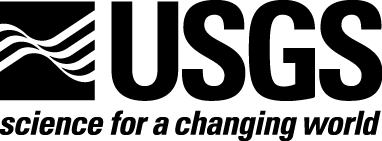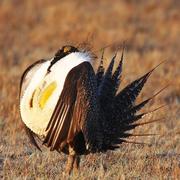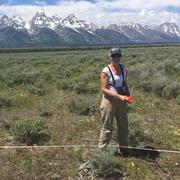Sage-grouse & Sagebrush Ecosystem
Home
USGS has been a leader in sagebrush ecosystem research and continues to meet the priority science needs of management agencies. We bring a diversity of expertise and capabilities to address a wide variety of science needs at multiple spatial scales and are committed to providing high quality science to our management partners.
Greater Sage-grouse Annotated Bibliography
Synthesizes the scientific literature published since records of decision were completed for 2015 BLM/USDA Forest Service land use plan amendments for greater sage-grouse, and provides potential management implications of the science.
See the reportMeet our lead scientists and team members
Information about USGS principal investigators (PIs) working on sage-grouse or sagebrush ecosystem issues is available here.
Meet the PIsLooking for more information?
We have put together a list of related resources and links for the sage-grouse and sagebrush ecosystem.
Find out moreNews
Annotated Bibliography of Scientific Research on Greater Sage-Grouse Published
The U.S. Geological Survey has reviewed and summarized the substantial body of literature related to the conservation, management, monitoring, and assessement of the greater sage-grouse, creating an annotated bibliography that provides easy access to sage-grouse science developed since 2015.
Research Spotlight: New Research Indicates that Greater Sage-Grouse are Struggling to Adapt to Wildfire-Induced Changes in the Great Basin
Research from the USGS and partners concluded that greater sage-grouse in the Great Basin often select nest sites that result in poor nest survival following wildfire. The poor quality nest sites are strongly associated with spread of invasive understory grasses and loss of shrub canopy cover.
People of the Sage
Meet one of the People of the Sage, Dr. Anna Chalfoun, Assistant USGS Cooperative Research Unit Leader and Associate Professor at the University of Wyoming. Don’t let the titles intimidate you, Anna Chalfoun loves all types of hockey, loves horses—all animals really! Even snakes.
Publications
Integrating ecosystem resilience and resistance into decision support tools for multi-scale population management of a sagebrush indicator species
Imperiled sagebrush (Artemisia spp.) ecosystems of western North America are experiencing unprecedented conservation planning efforts. Advances in decision-support tools operationalize concepts of ecosystem resilience by quantitatively linking spatially explicit variation in soil and plant processes to outcomes of biotic and abiotic disturbances....
Ricca, Mark A.; Coates, Peter S.Estimating abiotic thresholds for sagebrush condition class in the western United States
Sagebrush ecosystems of the western United States can transition from extended periods of relatively stable conditions to rapid ecological change if acute disturbances occur. Areas dominated by native sagebrush can transition from species-rich native systems to altered states where non-native annual grasses dominate, if resistance to annual...
Boyte, Stephen P.; Wylie, Bruce K.; Gu, Yingxin; Major, Donald J.Validating a time series of annual grass percent cover in the sagebrush ecosystem
We mapped yearly (2000–2016) estimates of annual grass percent cover for much of the sagebrush ecosystem of the western United States using remotely sensed, climate, and geophysical data in regression-tree models. Annual grasses senesce and cure by early summer and then become beds of fine fuel that easily ignite and spread fire...
Boyte, Stephen P.; Wylie, Bruce K.; Major, Donald J.







